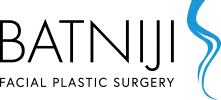Chemical Peel: The Original Skin Rejuvenator

Also called Chemical Resurfacing, Chemexfoliation, Chemoexfoliation or Derma Peeling
Ancient Egyptians are credited with creating a number of cosmetic products and procedures still in use today. To our knowledge, these innovators developed eyeliner in the form of a stick covered in kohl, tooth brushes and breath fresheners consisting of cinnamon and other natural ingredients, and even chemical peels. It is thought that lactic acid was the original topical ingredient used to smooth the skin.
Chemical peels are performed to chemically slough off problem skin to reveal the fresher, new epidermis below. In our modern day, patients have the luxury of undergoing the procedure in a controlled environment with a wider array of peels to choose from. The ingredients can be categorized by their strength. Alpha hydroxyl acid (AHA) peels consist of lactic, fruit, or glycolic acids and are the mildest of the formulations. Trichloracetic acid (TCA) peels create a medium-depth peeling action, and phenol peels are regarded as the strongest. With all this information, how will you choose the best option for you? See the guide below to help answer questions you may have about treating specific issues of the skin.
AHA – Superficial Peels
Acne and subsequent scarring can be treated through this type of a chemical peel. Other issues associated with oily and problem skin, such as large pores and blackheads, can also be diminished. Because the combined ingredients and technique are also designed to firm the underlying layers of skin, the beginning signs of aging can also be combatted. This peel can be formulated through certain fruits and other natural ingredients.
TCA – Medium Peels
Trichloracetic acid more readily penetrates into the deeper areas of the skin. This peel can treat excessively oily skin and serious pigmentation issues such as melasma and brown spots. In addition, it may be more effective in treating deeper lines and wrinkles. A medium peel is preferable to phenol peels for use on darker skin tones to prevent unwanted side effects like keloid scars and long-lasting pigmentation issues.
Phenol – Deep Peels
Following a phenol peel, the strongest and most aggressive type of chemical peel available, newly formed, stronger collagen will replace weaker existing structures. These peels are ideal for skin that shows advanced signs of aging, such as deeply imbedded wrinkles and sagging skin. Patients have the option to treat their entire face through a phenol peel or just the areas that are most affected by aging, such as around the eyes and mouth. Recovery can be extensive but results are typically dramatic.
Though the above information offers a brief introduction to chemical skin-refining techniques, an appointment with renowned Newport Beach facial plastic surgeon Dr. Rami Batniji can offer patients a full guide to a treatment program suited to their own needs. Visit the office at 361 Hospital Road, Suite #329, Newport Beach, CA 92663, or call 949-650-8882 to schedule an appointment.

